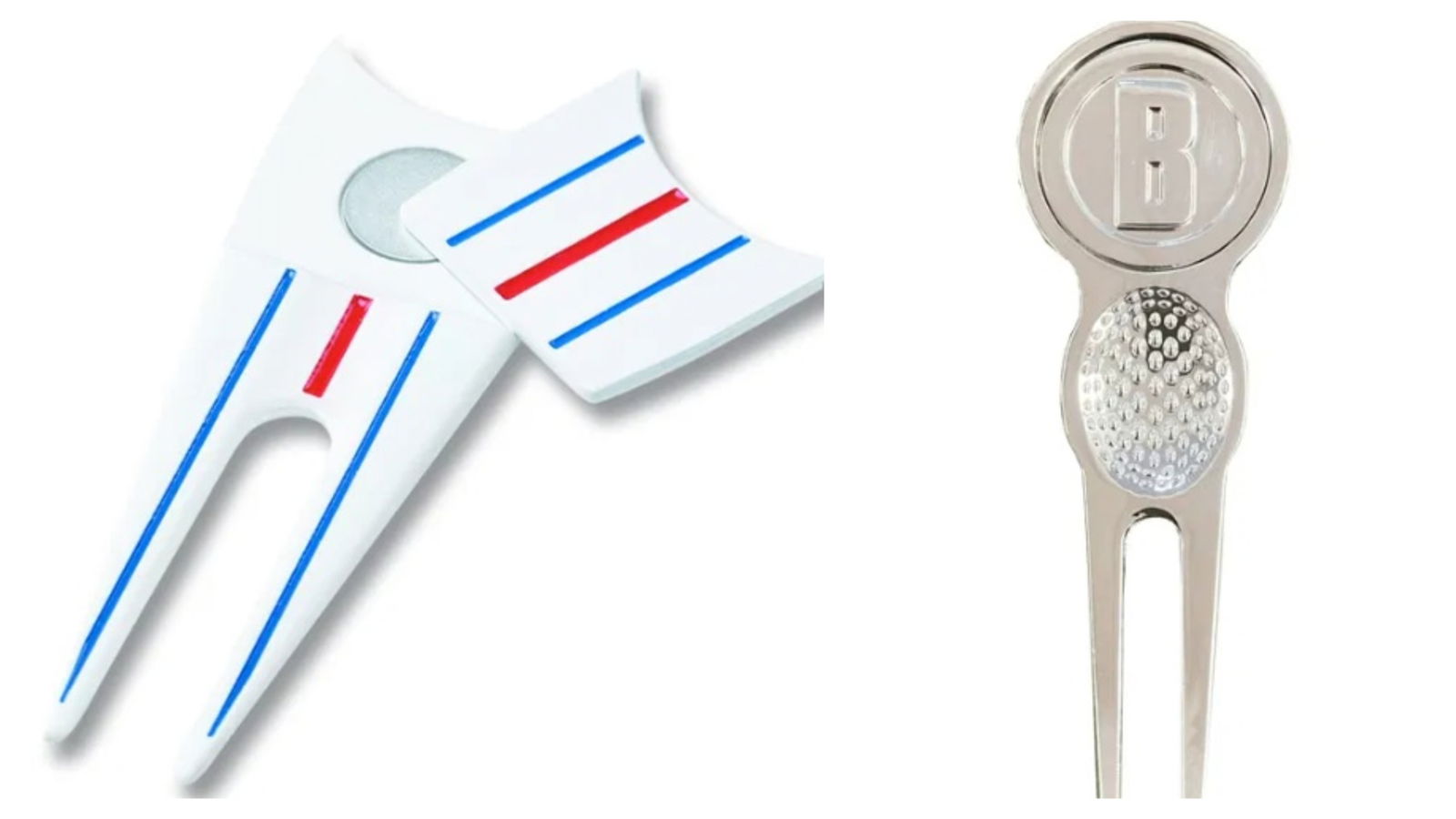The Best Golf Tees: Our expert picks for performance, durability and value
They're perhaps the most overlooked piece of equipment you'll buy, but the right tees can have a big impact on both your game and the planet.

Golf tees have come a long way since their humble origins, shaped from handfuls of sand by earnest caddies.
Nowadays, buying a packet of tees has become almost something of a cliched ritual: one born out of necessity and countless little plastic castles lost to the course over many rounds. You'll likely buy whatever mixed packet is cheapest at your local pro shop, empty it out into one of your bag's pockets, and away you go.
Here at GolfMagic, however, we think you should think about that decision a little more closely. As five-time PGA Tour winner Roger Maltbie once said, a golf tee is something we should all be using whenever we are given the opportunity. After all, "if it was not an advantage, they would let us use one everywhere."
Choosing the right tee, then, is surprisingly important to tailor your experience on the tee to the rest of your game. Finding consistency in the height you tee your ball at is often essential in finding consistency with your drives, and investing in good tees can not only help make this process only far simpler, but help bring an end to the scourge of cheap, broken plastic tees littering boxes across the land.
Where, then, do you start? We've pulled together a selection of pro-calibre tees that'll help not only add yards and consistency to your game, but in some cases reduce your impact on the environment as well.
The best golf tees for 2025
GolfMagic may receive a small advertising or affiliate commission if you buy via our links. Pricing may vary.

Pride Sports Professional Tee System Bamboo
The Pride Professional Tee System is one of the most recognisable in the sport, and adding some much-needed sustainability credentials to the brand, now comes in a bamboo version too.
Its likely you've seen these tees in pro shops and golf outlets before, laden with different coloured accents to denote the different heights can be seen across courses throughout the game. The ring of colour suggests how far to push the tee into the ground, which creates an element of consistency in your tee height that most golfers tend to simply ignore.
You will, however, need to buy different colours to suit your driver, woods, hybrids and irons. If not, you’ll likely find yourself doing similar to what we did; utilising the longest option and pushing it further into the teebox to suit the club – which makes the whole system somewhat redundant.
That being said, with 75 – 120 tees in each bag dependent on the length of tee, the product is good value, coming in at £6.99 for the larger bag. Given you’ll only need a handful per round (particularly if you’re utilising the smaller tees with your irons to avoid breakages), it’s understandable how this range continues to be so popular amongst golfers.
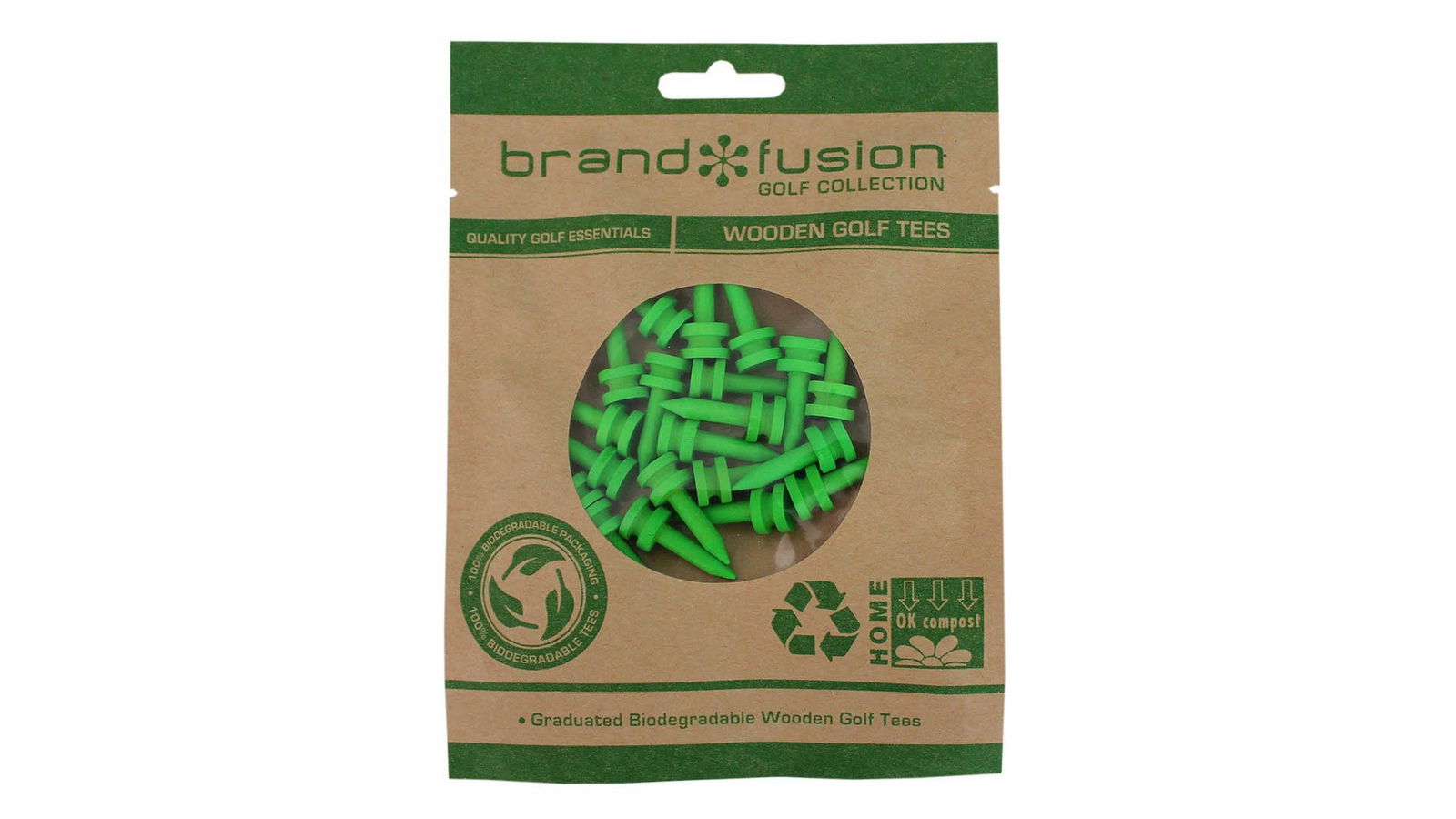
Brand Fusion Biodegradable Golf tees
The castle tee has been a staple of golf clubs for generations – with the famous pink, white, and yellow offerings in particular familiar to all. This offering from Brand Fusion takes that concept and brings it into the 21st century, with a wood-based, fully biodegradable version of each. Every element of the product, from the tee itself, is eco-friendly or compostable.
The tees themselves provide basically everything you'd expect or want from a castle tee. They deliver consistency of height, and come in a range of bright colours to stand out once hit. They're also light on the wallet, coming in at £2 per pack. We’d buy these every time over their plastic counterparts.
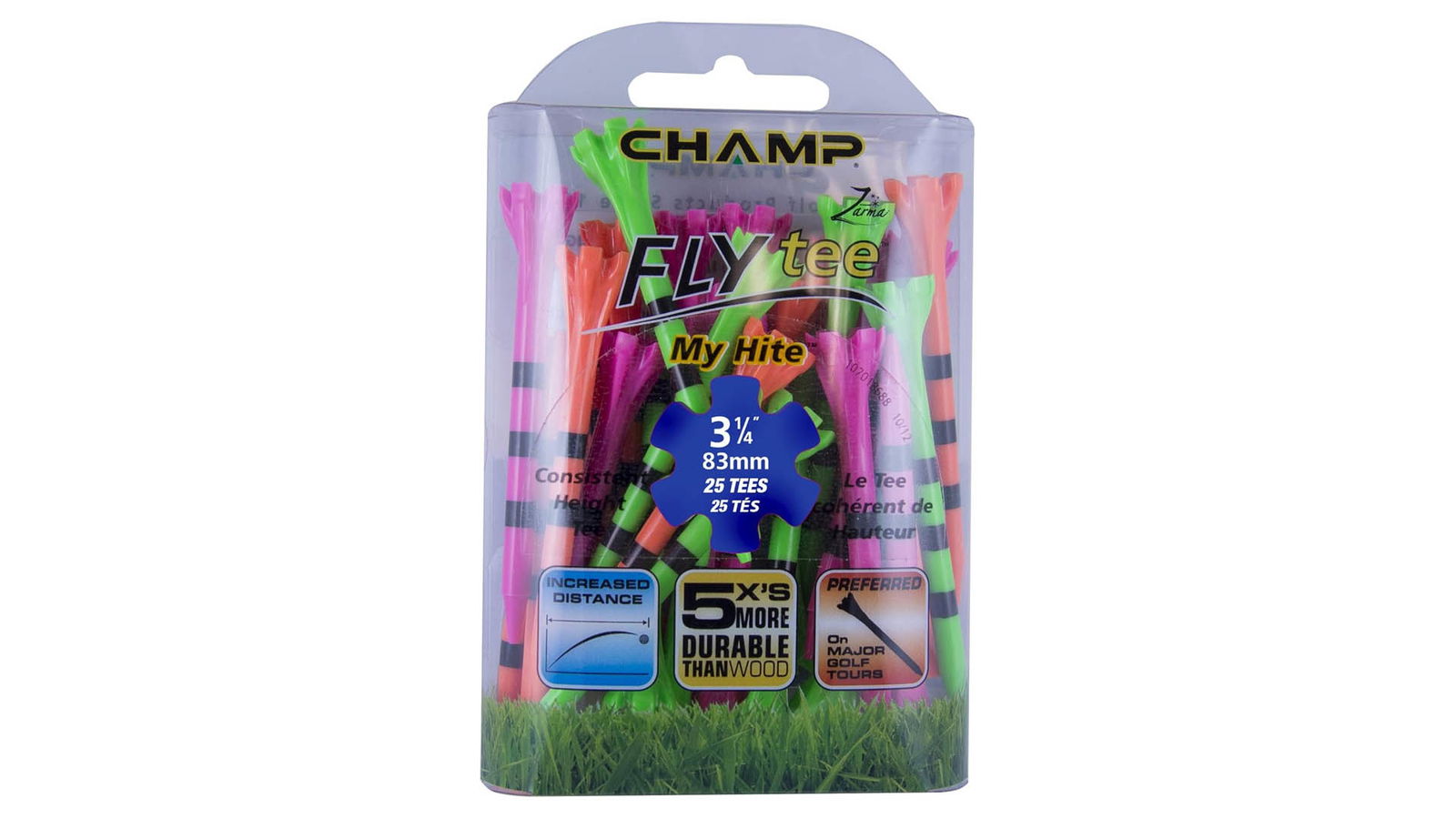
Champ My Hite FLYtees
Champ's much-loved Flytee range are the only plastic option we've included on this list, but we've done so nonetheless because the composite Champ uses is, thankfully biodegradeable. They also claim it's five times more durable than wood, meaning less breakages, less litter left around the course, and more bang for your buck per packet. The package too is built to be sturdy and reusable, cutting down on packs left in landfill.
Champ's tees are renowned for their performance credentials as well. The My Hite rings provide a simple visual aid for consistent teeing height. Champ also pioneered the idea of low-friction tees, with their signature six-pronged contoured heads said to reduce friction between ball and tee, therefore increasing distance.
Naturally, we're skeptical of any tee that claims to boost your driving distance. But as far as tees go, they're well made, great to use and as worthy of recommendation as any—even if they are a little pricier.
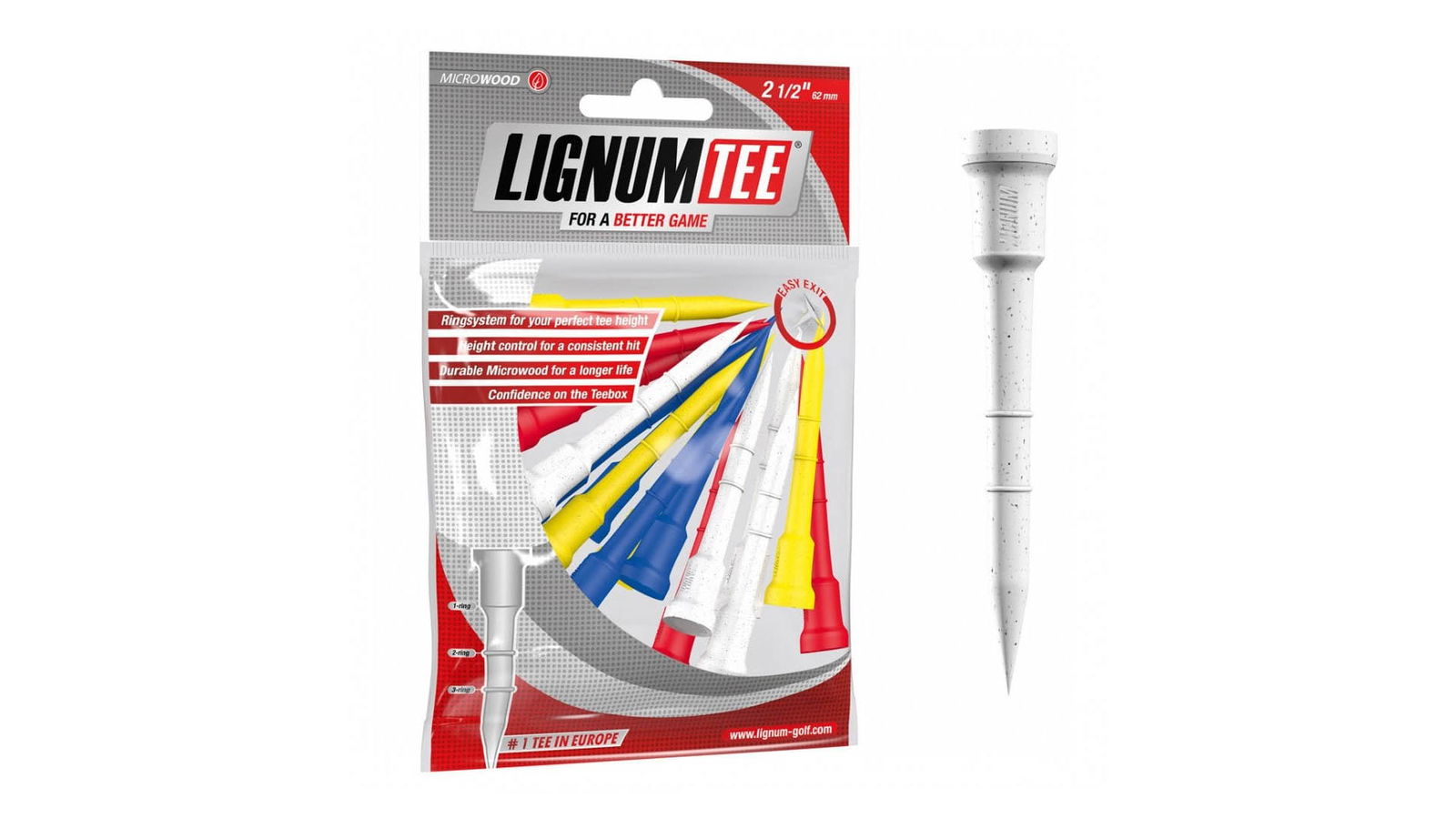
Lignum Composite Tees
Lignum Tees are an interesting proposition in a number of ways. They're made from what they call microwood: a sort of wood composite that's both biodegradable and more eco-friendly to produce. They're also made in factories within Europe that have strong records with employee health and wellbeing – to ensure the positive impact of their creation isn’t just in the nature of the materials.
The dual benefit of Lignum's unique material is that, interestingly, they're more flexible, which theoretically stops them from breaking when exposed to sudden forces.
In addition to this, Lignum tees are made with a distinctive ringed construction, which works much like the lines on the Professional Tee System. In our testing, we found the ring system was good for getting a consistent tee height – you could even put a sharpie mark if you like at your desired position.
However, we did seem to go through a few of these tees during our tests – and the longer length made this particularly problematic when testing irons. Moreover, the slightly flexible nature of the tees made them a little difficult to get into the ground on the firm tee boxes we tested these in.
With all this innovation also comes an inflated price. At £4.99 for a pack of 12, the Lignum tee are an investment, and one that could prove costly in the long run if you're liable to break or lose tees with any regularity.
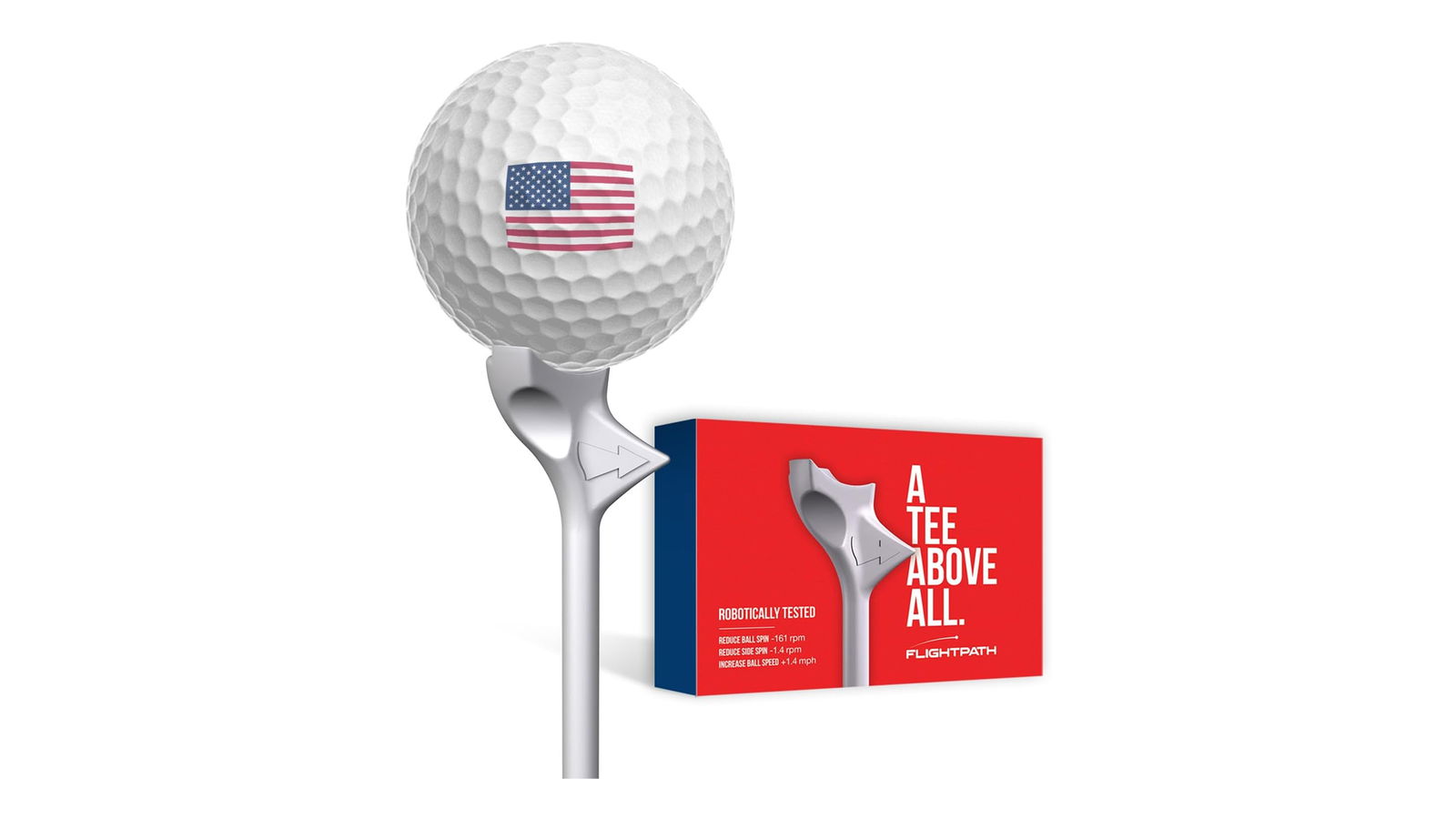
Flightpath Golf Tees
Billed as the most technologically advanced legal tees on the market, Flightpath's tees come with ultra-premium packaging and an ultra-premium price tag, setting you back around £25 for a box of 16. That's more per unit than some of the best beginner golf balls.
What are you paying for, then? The answer lies in the distinctive diamond-shaped head, cut out on one side so as not to impede the golf ball, which if you believe the marketing spiel reduces friction between the tee and ball and results in longer, straighter drives.
Does it actually work? Well, if you believe Flightpath's own data, yes. The brand claims to have done robot testing and found its tees helped increase launch angle and distance while reducing spin. At any rate, they're durable, well made and provide something of an alignment aid to get your tee shots off on the right path. They're also USGA approved for tournament play.
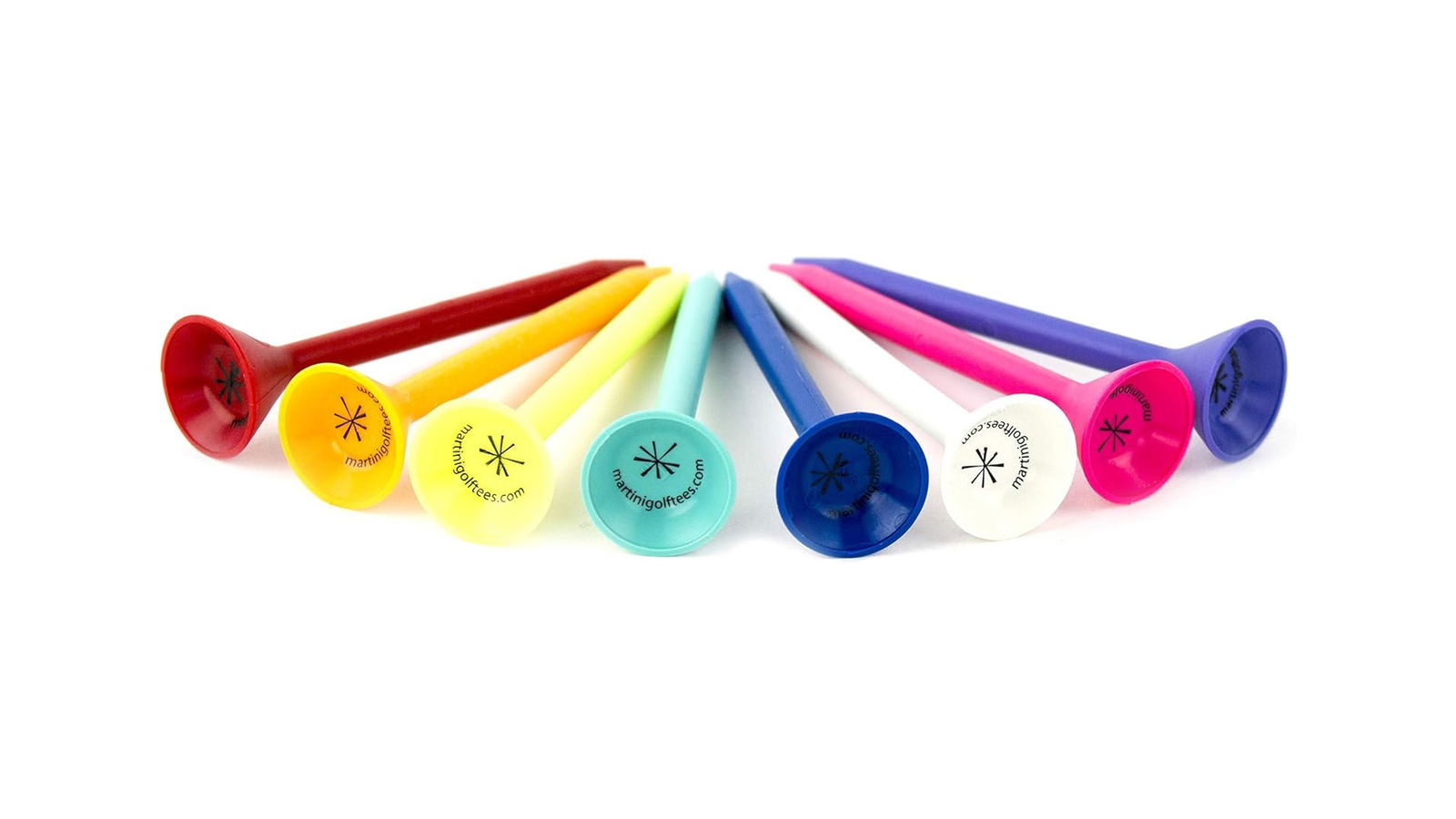
Martini Golf Tees
A great choice for seniors and those who struggle with dexterity, Martini golf tees add an extra layer of accessibility into the sport by providing a wider, Martini-glass shaped (hence the name) opening in which to place the ball.
Billed as being virtually unbreakable, the Martini tees come in a range of bright colours to stand out amidst the grass, and certain models are manufactured with steps at predetermined heights to guarantee consistent teeing every time.
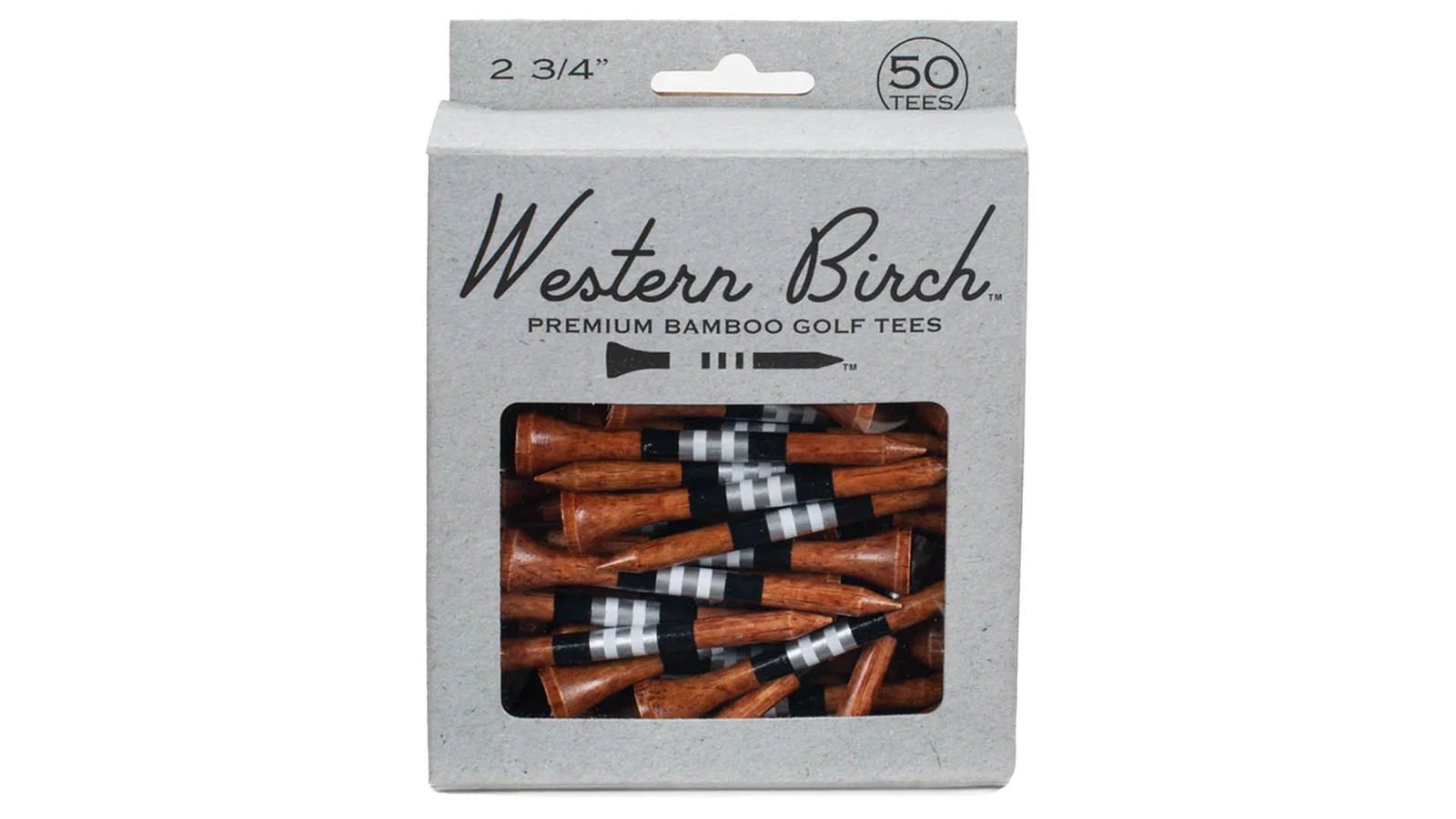
Western Birch Premium Wood Golf Tees
The thought of paying £15 for a packet of golf tees is, we admit, more than most people are going to be able to stomach. But if you're a player who values luxury and quality in every element of their game, this could be up your alley.
Western Birch are a UK-based manufacturer of premium golf tees, crafting theirs from high-quality bamboo but engineering them for a high-end look, on-course functionality and durability, with their tees featuring a thicker shank to prevent breakage and a simple line system to aid with tee height. You do also get 50 in a pack which, while a sizeable investment, means it'll likely be a long time between replacements if you look after them.
For extra style points, we'd suggest grabbing the brand's latest collab with luxe bag manufacturer Vessel, coloured in a sleek black and silver colour scheme.
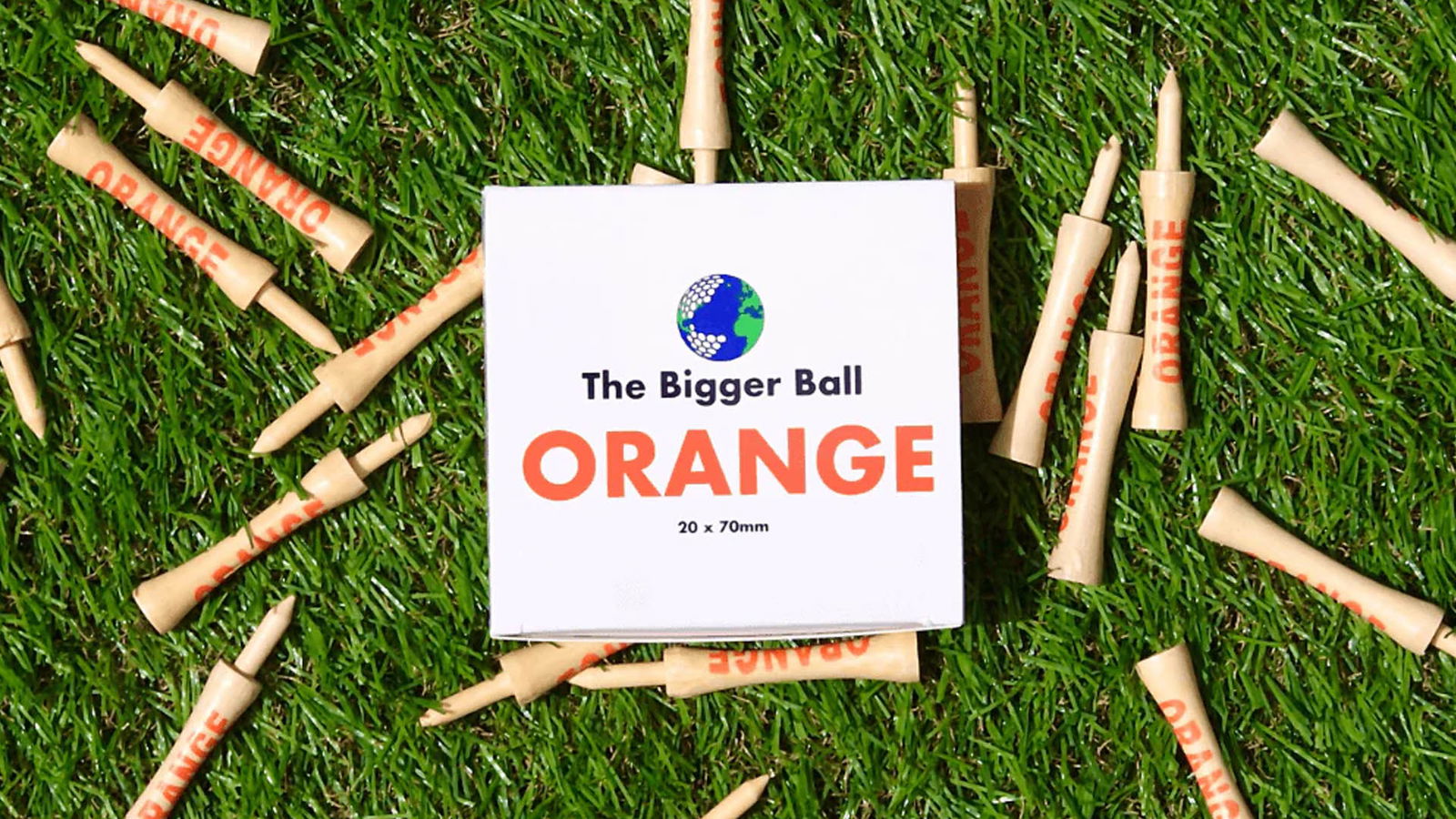
The Bigger Ball Bamboo Golf Tees
Before the introduction of Bamboo golf tees, tees were a bit of a sustainability thorn in the side of the game, with millions of tees made from either single-use plastic or unsustainably-sourced wood finding their way onto tee boxes every year.
Bamboo golf tees are the natural answer to this problem. It not only grows significantly faster and easier than the wood made into tees for much of the game's history, but is harder as well, ensuring your tees will last longer between replacements.
There are, of course, plenty of Bamboo golf tee manufacturers around now. The Bigger Ball, who have set out on a mission to create sustainable alternatives for not just tees, but a handful of other golf essentials, from wooden bag tags and divot repair tools, to bamboo fibre towels.
A mixed bundle of Bigger Ball tees will set you back just a tenner at the time of writing, which we think is a steal.
Why should golfers invest in quality golf tees?
Golfers often focus on clubs, balls, and swing mechanics, but the importance of a good golf tee is frequently overlooked. A high-quality tee can improve consistency, enhance performance, and even protect your equipment.
First, the right tee helps optimize ball height, ensuring a clean strike with minimal resistance. This is especially crucial for drivers, where consistent ball placement can significantly affect distance and accuracy. Many modern tees, such as friction-reducing or brush tees, are designed to minimize spin and improve launch conditions.
Durability is another key factor. Cheap plastic or wooden tees break easily, leading to frequent replacements and inconsistent performance. Premium tees last longer, saving money in the long run and reducing on-course distractions.
Additionally, using well-designed tees can prevent club damage. Some tees are engineered to flex upon impact, reducing stress on your driver’s face and maintaining club integrity over time.
Finally, golf tees come in various sizes and styles tailored to different swings and club types. Investing in the right one ensures that each drive starts off with the best possible foundation, leading to better overall results. A small but valuable investment, good golf tees can make a noticeable difference in any golfer’s game.
Do you have to use a golf tee when you start play of a hole?
No, you can place your golf ball on the surface of the ground if you really want to, but only very good ball strikers or Tour professionals will ever even contemplate this idea.
Golf tees give you an advantage to strike the ball cleanly and help get it airborne, so you really should use a golf tee on every shot from the tee box if you can help it.
Some golfers on Tour have raised up the turf in the ground to create a little divot, or even placed a small pile of sand on the ground to tee their ball up.
Remember when a European Tour pro tried THIS - WATCH HERE
How do we test golf tees?
All of our selected golf tees have been put through their paces over the years by GolfMagic's equipment and review editors.
Different tee lengths were also used from longer tees best suited for golf drivers down to shorter tees perfect for iron shots on par-3 holes.
Several factors helped us select the best tees for golf and these included price, sustainability, robustness and technology.
What is the maximum tee height under the Rules of Golf?
Golf's governing bodies the USGA and R&A dictate that the maximum height for a golf tee is 4 inches in total height.
It doesn't matter to the USGA or R&A how far in the ground the golfer puts the tee.
How high should you tee your golf ball?
For many beginner golfers, understanding how tee height can effect your shot can be a little confusing and many will be losing out on distance off of the tee by doing it ever so slightly incorrectly.
One question we often here a lot from golf beginners is how high should they tee the golf ball with the driver?
The ideal tee height is about 1.5 inches for a driver.
A little secret into golf tee height is that you want to make sure the ball just "peeks" above the crown after you sole the club at address.
But to be honest, there is no right or wrong answer to this question as a lot of it is down to a few things.
One being simply your preference and how you like your golf ball to fly and the other is the degree of your driver.
Every golfer is different at the end of the day, and we all swing it differently to one another.
If you have a driver that is 10.5 degrees, that number is the degree of the sweet spot, so when you hit the ball bang off of the middle of the clubface, the angle is 10.5 degrees.
Now say you catch the ball a little high on the clubface, that's going to increase the degrees by a couple, likely to around the 12.5/13 degree mark, while if you catch it low on the clubface, the degree will drop slightly, to around 8 degrees.
When the conditions are pretty calm and there isn't much stopping you from hitting a lovely straight drive, you want to tee the ball slightly higher so that you catch it on the way up.
This means you're connecting with the ball as the clubface starts to travel upwards, which reduces the amount of spin on the ball, leaving it in the air for longer and helping you gain more distance.
If the conditions are a little tricky and you're facing a crosswind, teeing the ball slightly lower can help you hit a lower, more penetrating drive through the wind and the ball will have more control once it hits the fairway due to more backspin being on the ball, making it stop quicker.
It's important that you don't get carried away with tee heights. Your ball should never be higher than showing one half above the top of the driver and when teeing it low, the lowest it should be is with the top of the ball in line with the top of the driver.



